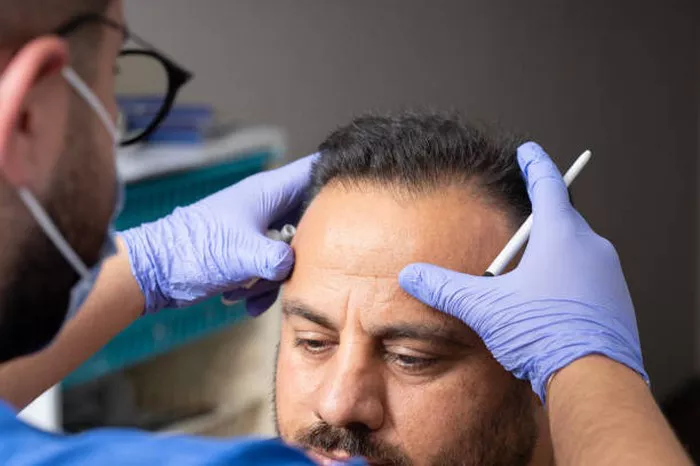Hair transplants have become a popular solution for those struggling with hair loss. However, one of the most common questions people have is: How long does it take to heal after a hair transplant? In this comprehensive guide, we’ll break down the healing process, recovery timeline, and tips for ensuring optimal results.
Understanding the Hair Transplant Procedure
Before diving into the healing process, it’s important to understand what a hair transplant entails.
There are two primary methods:
Follicular Unit Transplantation (FUT): A strip of skin with hair follicles is removed from the donor area (usually the back of the head) and transplanted to the balding area.
Follicular Unit Extraction (FUE): Individual hair follicles are extracted from the donor area and implanted into the recipient area.
Both methods are effective, but the healing process may vary slightly depending on the technique used.
Immediate Post-Transplant Recovery (Days 1-7)
The first week after a hair transplant is crucial for healing.
Here’s what to expect:
Day 1: The First 24 Hours
Swelling and Redness: It’s normal to experience swelling, redness, and minor discomfort in the donor and recipient areas.
Bandages: If you’ve undergone FUT, your scalp may be bandaged for a day or two.
Rest: Avoid touching or scratching the treated areas to prevent infection or dislodging grafts.
Days 2-3: Initial Healing
Scabbing: Small scabs will form around the transplanted follicles. This is a natural part of the healing process.
Washing: Your surgeon will provide instructions on how to gently wash your scalp without disturbing the grafts.
Medication: You may be prescribed antibiotics or anti-inflammatory medications to reduce swelling and prevent infection.
Days 4-7: Shedding Phase
Shock Loss: Some of the transplanted hairs may fall out. This is normal and part of the hair growth cycle.
Itching: Mild itching is common as the scalp heals. Avoid scratching to protect the grafts.
The First Month After a Hair Transplant (Weeks 1-4)
The first month is a critical period for recovery.
Here’s what happens during this phase:
Week 1-2: Continued Healing
Scab Removal: Scabs will naturally fall off within 7-10 days. Avoid picking at them.
Swelling Subsides: Swelling and redness will gradually decrease.
Activity Restrictions: Avoid strenuous activities, heavy lifting, or bending over to prevent increased blood flow to the scalp.
Week 3-4: Early Growth Signs
Hair Shedding: Most of the transplanted hairs will shed during this time. This is part of the natural process, and new growth will follow.
Scalp Sensitivity: The scalp may still feel tender, but discomfort should be minimal.
Return to Normal Activities: Light exercise and daily routines can typically resume after the second week.
Months 2-3: The Dormant Phase
During this phase, the transplanted hair follicles enter a resting period.
Here’s what to expect:
No Visible Growth: It’s common to see little to no hair growth during this time.
Patience is Key: This phase can be frustrating, but it’s a normal part of the process.
Scalp Care: Continue to follow your surgeon’s aftercare instructions to maintain scalp health.
Months 4-6: Early Growth Stage
This is when the magic starts to happen.
Here’s what you’ll notice:
New Hair Growth: Fine, thin hairs will begin to emerge from the transplanted follicles.
Improved Density: The hairline and balding areas will start to look fuller.
Styling Options: You can begin to style your hair, but avoid harsh chemicals or heat tools.
Months 7-12: Full Results
By this stage, the healing process is nearly complete, and the results become more apparent:
Thicker Hair: The transplanted hair will thicken and blend seamlessly with your natural hair.
Final Look: Most patients achieve their desired results by the 12-month mark.
Confidence Boost: Enjoy your new look and improved self-esteem.
Factors That Affect Healing Time
Several factors can influence how long it takes to heal after a hair transplant:
Type of Procedure: FUT may have a slightly longer recovery time due to the linear scar.
Individual Healing: Everyone’s body heals at a different pace.
Aftercare: Proper care and adherence to post-op instructions can speed up recovery.
Lifestyle: Smoking, alcohol consumption, and poor diet can delay healing.
Tips for a Smooth Recovery
To ensure the best possible results, follow these tips:
Follow Aftercare Instructions: Your surgeon will provide specific guidelines for washing, medication, and activity restrictions.
Protect Your Scalp: Avoid direct sunlight, wear a hat when outdoors, and use sunscreen on the scalp once healed.
Stay Hydrated and Eat Well: A healthy diet rich in vitamins and minerals supports healing and hair growth.
Avoid Stress: Stress can negatively impact recovery, so practice relaxation techniques.
When to Contact Your Surgeon
While complications are rare, it’s important to know when to seek medical advice:
Excessive Swelling or Pain: If swelling or pain worsens after the first few days.
Signs of Infection: Redness, pus, or fever could indicate an infection.
Poor Growth: If you notice no growth after 6 months, consult your surgeon.
Conclusion
Healing after a hair transplant is a gradual process that requires patience and proper care. While the initial recovery takes about 7-10 days, full results can take up to 12 months. By understanding the timeline and following your surgeon’s advice, you can achieve the best possible outcome and enjoy a fuller, natural-looking head of hair.
Related topic:
- When To Stop Minoxidil Before Hair Transplant?
- When Can Sleep Normal After Hair Transplant?
- How Much Does Hair Transplant Cost In Chicago?


